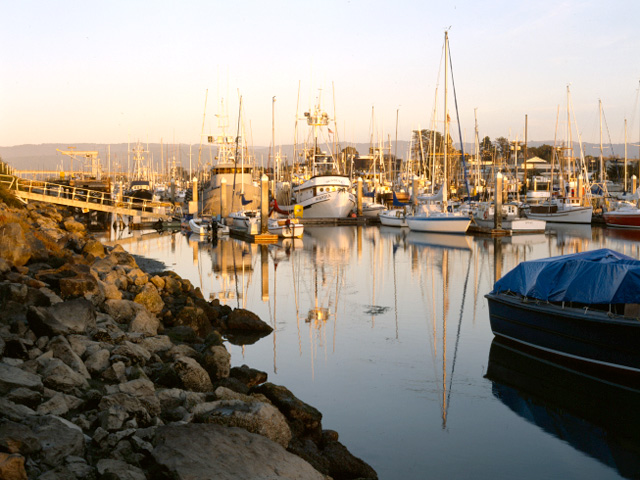
The findings suggest that without major management changes, commercial fishing could meet the same fate as Santa Clara County’s extinct truck produce and processing industry and Sonoma County’s withered apple sector.
Commercial salmon fishing, which has suffered recently from limited seasons and outright closures, is far from alone in the industry’s plight, according to statewide data analyzed by Humboldt State Economics Professor Steve Hackett, his research associate, Doreen Hansen, HSU undergraduate researchers and the Maryland consulting firm King and Associates. Although Dungeness crab fishing is strong on a cyclical basis, money-losing operations include such fisheries as harpoon/spear, hook and line, near shore and ground fish trap, sea urchin and southern California trawl.
Persistent revenue losses have shrunk the industry dramatically. Department of Fish and Game sales of commercial fishing licenses of all types sank 31% from 2000 to 2008, dropping from 26,049 to 18,052, according to Terry Tillman, a senior biologist and fisheries economist at the department.
Correspondingly, Hackett said, “The number of vessels in the industry has shrunk substantially across the whole state, the average age of commercial fishermen is getting older and a lot fewer people are engaged in commercial fishing. All this results in a struggle for funding to maintain the harbor and port infrastructure the industry is dependent on.”
Strong competition is in play as well. The commercial sector duels for catch with private sport fishermen, intensely so in southern California. Meanwhile, competition for fishing grounds is heightened by marine protection initiatives and the likelihood California will deploy wave energy conversion systems at sea to gain alternative electrical output.
“What you have is a constellation of policy challenges besetting commercial fishing,” Hackett emphasized, noting a corrosive feedback effect. “When it’s so hard to fish commercially and you don’t have enough fishermen, then the fish processors begin to fall by the wayside. And without them, you can’t have a commercial fishing industry. It’s very similar to what happened with truck produce and processing in Santa Clara County, which was completely eliminated by urbanization. Same thing with apple processing in Sebastopol and Sonoma County: the industry shrinks, you lose the processors and then eventually the rest of the industry goes away.”
Tillman said the new economic analysis could be a crucial underpinning for bold management actions to restore the industry’s health. “In some instances, bold action may even be for [state and federal] management to let the industry operate with more flexibility, as an unfettered or unencumbered business enterprise,” he said in an interview. “Of course, there have to be biological constraints that the department, as a custodian of a public resource, needs to keep tabs on. But as long as we have acceptable fishing practices and sustainable levels of fish, there may be room to allow the fishing fleet to operate more profitably.”
Many other states and countries have taken that direction under fisheries quota programs, he said, but California has not been in the forefront.
The analysis and companion files are titled “The Economic Structure of California’s Commercial Fisheries,” available at http://www.dfg.ca.gov/marine/economicstructure.asp